

Mia JayLexiDaraMonty Mia JayLexiDaraMonty
First published 2024
The Educational Company of Ireland
Ballymount Road
Walkinstown
Dublin 12
www.edco.ie
A member of the Smurfit Kappa Group plc
© Annette Black, Claire Corroon, 2024
All rights reserved. No part of this publication may be reproduced, stored in a retrieval system, or transmitted in any form or by any means, electronic, mechanical, photocopying, recording or otherwise, without either the prior permission of the Publisher or a licence permitting restricted copying in Ireland issued by the Irish Copyright Licensing Agency, 63 Patrick Street, Dún Laoghaire, Co. Dublin.
ISBN 978-1-80230-124-3

Design and layout: Design Image
Illustrations: Adrienn Schönberg, Judy Brown
Editor: Donna Garvin
Copy editor: Elaine Collins
Proofreaders: Eric Pradel, Jane Rogers
For permission to reproduce photographs and other images, the author and publisher gratefully acknowledge the following: iStock: p.28 © GlobalStock; p.28 © xavierarnau; p.122 © Elfstrom. Rainbow Toyfrog: p.32. Shutterstock: p.9, p.15, p.17, p.19, p.23, p.26, p.27, p.31, p.32, p.38, p.42, p.43, p.45, p.46, p.51, p.53, p.59, p.64, p.67, p.68, p.70, p.88, p.92, p.93, p.94, p.95, p.96, p.97, p.101, p.102, p.103, p.104, p.106, p.107, p.112, p.122, p.125, p.128; p.26 © Zety Akhzar; p.43 © gd_project; p.45 © SashaMagic; p.51 © JustPH; p.53 © Ellianne; p.53 © Ekaterina_Minaeva; p.92 © Keith Homan.
While every care has been taken to trace and acknowledge copyright, the publishers tender their apologies for any accidental infringement where copyright has proved untraceable. They would be pleased to come to a suitable arrangement with the rightful owner in each case.


Introduction
The Maths and Me Pupil’s Book consolidates learning by bringing the Primary Maths Curriculum (2023) to life through engaging, playful and interactive activities. It links maths to daily life through real-life pictures, problems and tasks, so children will appreciate the relevance and significance of maths in their everyday experiences.
The relatable Maths and Me characters, Lexi, Dara, Mia, Jay and Monty the Dog help children to understand that we are all mathematicians, and model a positive disposition to maths.
Pupil’s Book Features
Colour coding – Pages are colour-coded so you can see what the main strand is at a glance:
Number
Measures
Shape and space
Let’s talk! Let’s play!
Let’s investigate!
Maths eyes
Try this!
Data and chance
Algebra
Let’s play! – Incorporates playfulness into maths through engaging games and interactive activities, making maths a fun and enjoyable adventure for children.
Let’s talk! – Provides opportunities for children to share their strategies and ideas, helping them to reflect on their current knowledge and identify emerging concepts.
Let’s investigate! – Encourages children to develop creative strategies through active participation and exploration.
Maths eyes – Encourages children to look around them and recognise maths in the real world.
Try this! – Provides optional, cognitively challenging tasks that offer an enriching learning opportunity for children.
Self-assessment – Gives children an opportunity to reflect on their work and colour in up to three stars at the end of each page, depending on how they felt they performed on a certain task.
Additional resource icons – Indicates if a photocopiable is needed to complete an activity.
Digital resources – Allows easy access for teachers using the ebook to the extensive menu of interactive resources provided for each unit.
Clear signposting – Allows easy navigation across the programme through direct correlation of the Lesson Title and the footer information to the Teacher’s Planning Book and the digital resources.
Unit 1 Digital Resources
–
–
–
–
–
Orange Blue Purple Green Red
PCM 1


Contents Unit 1: Numbers to 30 Counting to 20 6 Counting to 30 8 Counting in 2s and 5s 9 Representing Numbers 10 Tens and Ones 11 Comparing and Ordering 12 Unit 2: Addition and Subtraction 1 Bonds of 10 13 Turnaround Facts 14 Doubles 15 Near Doubles 16 Subtraction as Take Away 17 Adding and Subtracting 0, 1 and 2 18 Adding using Friendly Facts 19 Unit 3: Fractions Whole and Parts 20 Halves and Quarters 21 Halving Sets 22 Half Price 23 Quarters of Sets 24 Unit 4: Data 1 Tallies 26 Surveys 27 Symbols 28 Pictograms 29 Review 1: Woodland Walk 30 Unit 5: Time 1 Estimating and Measuring Time 32 Days, Months and Seasons 33 The Calendar 34 O’Clock 35 Half Past 36 Estimating Time 37 Unit 6: Shapes Properties of 2-D Shapes 38 2-D Shapes: Sides and Corners 39 Classifying 2-D Shapes 40 Shapes in Shapes 41 Naming and Sorting 3-D Shapes 42 3-D Shapes: Faces, Surfaces, Edges and Corners 43 Building with 3-D Shapes 44 Unit 7: Numbers to 100 Counting 45 Counting Groups 46 Representing Numbers 47 Tens and Ones 48 Comparing and Ordering Numbers 49 Estimating Numbers 50 Number Hunts 51 Review 2: The Toy Shop 52 Unit 8: Addition and Subtraction 2 Adding 10 and 9 54 Subtracting 10 and 9 55 Make Tens 56 Fact Families 57 Subtraction as Difference 58 Just Tens 59 Adding and Subtracting Tens with Two-digit Numbers 60 Unit 9: Location and Transformation Left and Right 61 Turns 62 Directions 63 Symmetry 64 Moving Shapes 65 Tessellations 66


Unit 10: Measuring 1 Comparing and Ordering Lengths and Heights 67 Measuring Length 68 Metres 69 Unit 11: Patterns Finding Patterns 70 Describing and Making Patterns 71 Growing or Shrinking Patterns 72 Review 3: The City 74 Unit 12: Addition and Subtraction 3 Adding without Renaming 1 76 Subtracting without Renaming 1 77 Adding without Renaming 2 78 Subtracting without Renaming 2 79 Renaming Ones as Tens 80 Adding with Renaming 1 81 Adding with Renaming 2 82 Unit 13: Measuring 2 Comparing and Ordering Weight 83 Measuring Weight 84 Kilograms 85 Comparing and Ordering Capacity 86 Measuring Capacity 87 Litres 88 Unit 14: Time 2 Digital Time 89 A Day 90 TV Timetable 91 Review 4: The Garden Centre 92 Unit 15: Money Euro Coins 94 Notes and Coins 95 More, Less or Equal? 96 Counting and Making Amounts 97 The Garden Shop 98 Finding Totals 100 Unit 16: Data 2 Pictograms 101 Block Graphs 102 Comparing Data Displays 104 Unit 17: Measuring 3 Comparing and Ordering Area 105 Measuring Area 106 Square Units 107 Unit 18: Number Sentences Number Sentences 108 Subtraction Number Sentences 109 Unit 19: Addition and Subtraction 4 Subtracting with Renaming 1 110 Subtracting with Renaming 2 111 Review 5: The Beach 112 Let’s Try More STEM Challenges and Investigations 114 Let’s Play! 116 End-of-year Challenge 118 My Maths Fact File 120
6 Unit 1 Digital Resources
1. 2. 3. 4.5.6. 7. 8. 9. 10. 11. 12.
Unit 1: Numbers to 30. Days 1 and 2, Lesson 1 copy child helmet scooter flag dog school bag wheel tree bicycle umbrella bird
Counting to 20 Maths eyes Count. Write the number.
AN SCOIL
Estimate and count.
Estimate: Count:
Estimate: Count:
Estimate: Count:
Estimate: Count: Complete. 12 4 9 12 15 16 17
7
BOOKSHOP
FRUIT AND VEG
Unit 1: Numbers to 30. Days 1 and 2, Lesson 1
1. 2. 3. 4.
Counting to 30
Try this! Work out the secret number from the clues.
● It is after 16 and before 24. What numbers could it be?
● It has 2 tens. Ring the numbers it could be.
● It has 3 ones. The secret number is .
Let’s talk!
In pairs, think of a number between 1 and 30. Use the words below to come up with clues for your partner:
before after between more less tens ones
Can your partner guess your number?
8
count. 1. 2. 3. Estimate: Count: Estimate: Count: Estimate: Count: Complete. 123 56 10 13 14 15 19 20 22 28 29
Estimate and
Unit 1: Numbers to 30. Days 3 and 4, Lesson 2
Counting in 2s and 5s
Maths eyes
1. Count in 2s.










2. Count in 5s.





Let’s talk! What is the same? What is different?














Let’s play!
You will need .
Play Rock, Paper, Scissors.
Take 2 counters when you win a round.
The first player to get 20 counters wins the game.
9
2 4
5 10 Complete.
●
1. 2. 3. 20 21 22 23 24 25 26 27 28 29 10 11 12 13 14 15 16 17 18 19 30 20 21 22 23 24 25 26 27 28 29 10 11 12 13 14 15 16 17 18 19 30 6 5 4 3 2 1 07 89 10 11 12 13 14 15 16 17 18 19 20 Unit 1: Numbers to 30. Day 5, Lesson 3
●
●
●
Representing Numbers
Write the numbers.
Show where each number in sits on the number line.
Try this! Show each number on the branching bond.
10
1. 2. 3. 4. 5. 6.
10 20 30 1. 2. 3. 4. 25 Unit 1: Numbers to 30. Day 6, Lesson 4
300 24 20 4 300 19 300 300
My favourite number is 24. My favourite number is 19. My favourite number is 26. My favourite number is 30.
Draw quick cubes to show each number. The 1st one is done for you.
Match the place value arrow cards.
11 Tens
Match. 1. 12 2. 21 3. 30 4. 13
and Ones
1. 13 2. 6 3. 9 4
15 5.
6.
7. 25 8. 29
.
18
20
Unit 1: Numbers to 30. Days 7 and 8, Lesson 5 Tens Ones Tens Ones Tens Ones Tens Ones Tens Ones Tens Ones Tens Ones Tens Ones 1 4 7 5 0 0 0 0 1 2 2 1 4 1 8 7 2 1 1 2 8 4 7 1
Comparing and Ordering
Write the matching number sentence. Write =, > or <.
=, > or <.
Write =, > or < to make each of these true.
Try this!
1. Write a number to make each of these true. (a) 15 < < 21 (b) 18 < < 29 (c) 30 > > 20
2. Write the greatest possible number to make each of these true. (a) 13 < < 20 (b) 15 < < 24 (c) 22 > > 11 +
12
1. 2. 3. 4. Write
1. 2. 3. 4
1. 30 13 2. 6 15 3. 21 12
5. 20
7 17 6. 19 9
10
.
4. 15 10 + 5
+
+
Unit 1: Numbers to 30. Day 9, Lesson 6
13 Unit 2 Digital Resources Unit 2: Addition and Subtraction 1. Day 1, Lesson 1 Bonds of 10 Write the matching bonds of 10. 1. 5 + 5 = 10 2. 4 + = 10 + 4 = 10 3. + = 10 + = 10 4. + = 10 + = 10 5. + = 10 + = 10 6. + = 10 + = 10 Fill in the missing numbers. 0 + = 10 1 + = 10 6 + = 10 2 + = 10 7 + = 10 Let’s talk! Is Lexi correct? Explain why. 10 1 2 7 6 I think there should be 11 number bonds of 10 altogether. I think that there is one missing in . Try this! Solve these. 1. 9 + 2 = 2. 3 + = 11 3. 5 + = 11 4. 8 + = 11 5. 6 + = 11 6. 4 + = 11 These are sometimes called near bonds of 10. Explain why.
Let’s talk!
In
Turnaround Facts
14 Unit 2: Addition and Subtraction 1. Day 2, Lesson 2
Write the matching fact and its turnaround fact. 1. 6 + = + 6 = 2. + = + = 3. + = + = 4. + = + = 5. + = + = 6. + = + =
, which
easier way to work out the answer? Explain why. Try this! 3 the correct facts in each set. 7 the incorrect one. 1. 7 + 6 = 13 13 + 6 = 7 13 = 6 + 7 6 + 7 = 13 2. 9 + 3 = 12 3 + 9 = 12 12 + 3 = 9 12 = 9 + 3 3. 8 + 6 = 14 14 = 6 + 8 6 + 8 = 14 6 + 14 = 8 300 13 67 300 12 39 300 14 86
was the
Doubles
Write the matching number sentences and solve.
Let’s talk!
What do you notice about the answers in ?
Do you know the special name for those numbers?




Use to model and double the money. Draw what you used. 1. 2.




I can think of a few different ways to do this.
Let’s play!
Doubles Snap

● You will need . Remove the J, Q and K.
● Play in groups of three. One player is the dealer.
● The dealer should turn over the top card.
● The first player to call out the double of that card wins the card.
● The player with the most cards at the end wins the game. They become the dealer next.
15 Unit 2: Addition and Subtraction 1. Day 3, Lesson 3
1.
2. + = 3. + = 4. + = 5. + = 6. + =
6 + 6 =
14!
Near Doubles
Write the matching number sentences and solve.
Let’s talk!
What do you notice about the answers in ?
Do you know the special name for those numbers?
Let’s play!
Doubles Snap Plus 1
● Play as you played Doubles Snap, but this time the first player to call out the double of each card plus 1 wins the card.
● For example, if the dealer turns over a , you should call out 11 (5 + 5 + 1).
Try this! Doubles Snap Less 1
Play as you played Doubles Snap, but this time the first player to call out the double of the card less 1 wins the card.
16 Unit 2: Addition and Subtraction 1. Day 4, Lesson 4
1.
+
= 2. + = 3. + = 4. + = 5. + = 6. + = 7. + = 8. + = 9. + =
3
4
Subtraction as Take Away


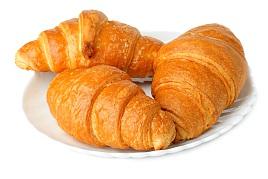


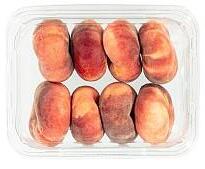
Let’s play!
Rock, Paper, Scissors
● You will need 10 or each.
● Take away 1 for each round you win.
● The first player to 0 wins the game.
Try this! Play Rock, Scissors, Paper with 20 or each.
17 Unit 2: Addition and Subtraction 1. Days 5 and 6, Lesson 5
Ta
1. Take away 2. – = 2. Take away 5. – = 3. Take away 3. – = 4. Take away 4 – = 5. Take away 2. – = 6. Take away 6. – = Strike out to take away. 1. 10 – 1 = 2. 9 – 4 = 3. 7 – 2 = 4. 8 – 2 = 5. 10 – 7 = 6. 8 – 5 = 7. 9 – 3 = 8. 6 – 6 =
ke away.
Adding and Subtracting 0, 1 and 2
3 the models that show their favourite number.
My favourite number is 13 and 1 more.
My favourite number is 2 less than 20.
My favourite number is 15 and 2 more.
My favourite number is 10. No more and no less!
1 ten and 2 ones
Let’s play!
● You will need 20 cubes stuck together as per player and a bag of red, green and blue .
● Without looking, take a counter from the bag. Red = 0, green = 1, blue = 2.
● Take that many cubes from your .
● The first player to 0 wins the game.
18 Unit 2: Addition and Subtraction 1, Days 7 and 8, Lesson 6
1. 2.
these. 1. 15 + 1 = 2. 19 2 = 3. 17 + 0 = 4
18 0 = 5. 14 1 = 6. 16 + 2 =
3. 4. Solve
.
10 – 0 =10 6 5 +1 4 3 2 1 07 89 10 11 12 13 14 15 16 17 18 19 20 6 5 -2 4 3 2 1 07 89 10 11 12 13 14 15 16 17 18 19 20 6 5 4 3 2 1 07 89 10 11 12 13 14 15 16 17 18 19 20 +2 6 5 4 3 2 1 07 89 10 11 12 13 14 15 16 17 18 19 20 +1
Adding using Friendly Facts
Ring the friendly facts. Add.
Let’s talk!
Compare what you did in with a partner. Did you both ring the same numbers? Did you ring different numbers?
Try this!
1. In the woods, Jay collected 7 , 5 and 6 . How many did he collect altogether?
2. In a bowl, there were 13 pieces of fruit: 8 , some and 2 . How many were there?
Let’s play!
Memory

● You will need . Remove the J, Q and K.
● Place the cards face down in rows.
● Take turns to turn over two cards.
● If you turn over a friendly fact, you get to keep the cards. But you must explain why is it a friendly fact!
I think friendly facts are very helpful. I got a friendly fact! I turned over:
● The player with the most cards at the end wins the game.
19 Unit 2: Addition and Subtraction 1, Day 9, Lesson 7
1. 3 + 6 + 3 = 12 2. 10 + 2 + 2 = 3. 7 + 3 + 7 = 4. 8 + 9 + 1 = 5. 4 + 8 + 4 = 6. 9 + 1 + 9 = 7. 2 + 8 + 8 = 8. 2 + 5 + 6 = 9. 2 + 8 + 7 = 10. 6 + 7 + 4 = 11. 5 + 5 + 4 = 12. 7 + 4 + 3 = 13. 7 + 3 + 7 = 14. 6 + 2 + 3 = 15. 6 + 4 + 6 =
Whole and Parts
Draw lines to cut each item into equal parts.
3 parts 2. 2 parts
4 parts 4. 8 parts
Let’s talk! How many parts? Try this! Make a whole bear.
1. How many whole bears can you make?
2. How many parts are left?
How did you count the parts?
20 Unit 3: Fractions. Day 1, Lesson 1 Unit 3 Digital Resources
1.
3.
Halves and Quarters
Draw a line on each shape to make halves. Colour each half a different colour.
Does each shape show quarters? 3 or 7. 1. 2.
Remember, each quarter must be the same size.
Maths eyes
1. Draw a shape you see in your classroom.
2. Can you draw a line to show half?
3. Can you draw another line to show quarters?
D Let’s investigate!
Cut out the 2-D shapes from your activity sheet. Then, cut each shape into halves and quarters. Is a half always bigger than a quarter?
21 Unit 3: Fractions. Day 3, Lesson 3
5. 6.
3. 4.
PCM 1
Halving Sets
Use to help you.
Let’s play!
Cross Off
● You will need a 0–9 spinner .
● In pairs, take turns to spin the spinner.
● The number that you spin is half of a whole number. Cross off that number on the grid.
● Miss a turn if the whole number is crossed off already.
● The first player to cross off all of their numbers wins the game. 2 4 68 10 12 14 16 18
Let’s talk!
Look at Monty and his friends. What do you think? Explain why. Can we have 1 each?
10 nice bones! I want 5! Try this! Use . What number am I?
1. Find half of 20. I am 1 less. 2. Find half of 10. I am 3 more. 3. Find half of 8. I am 2 less. 4. Find half of 16. I am 5 more.
22 Unit 3: Fractions. Day 6, Lesson 5
1. 1 2 of 20 is 2. 1 2 of 10 is 3. 1 2 of 18 is 4. 1 2 of 16 is 5. 1 2 of 8 is 6. 1 2 of 12 is 7. 1 2 of 14 is 8. 1 2 of 4 is
1 2 = 1 half
Half Price










Draw half of the in each bottom circle.










What price are the toys now? Write the sale price below each toy. Use to help you.




Try this! If these had been the prices in the price sale, what were the prices before the sale?
23 Unit 3: Fractions. Day 7, Lesson 6
1. 2.
2
1. 2. 3. 4. 5. 6. 7. 8.
Sale! All toys now 1
price!
1 2 2-6 players 20c 9c 18c 2-6 players 14c 16c 12c 4c 8c 12c 12c 14c c c c c c c c c c c c 1. 2. 3.
Quarters of Sets
Use to help you. Draw a quarter of the treats for each dog.
Let’s investigate!
You will need two 0–9 and . Spin each spinner. Add the numbers. Using that amount of counters, can you divide the set into... 1. halves? 2. quarters? I found half of these numbers: I found a quarter of these numbers:
24 Unit 3: Fractions. Days 8 and 9, Lesson 7
Treats 12 Treats 20 3. 2. 1. 4. Treats 16 Treats 8
Divide each set into quarters. Use to help you.
4. 1 quarter of is 1 quarter of is 1 quarter of is 1 quarter of is
Try this!
1. Mia had 12 . She gave away 1 quarter. How many did she have left?
2. Dara had 8 He loaned 1 quarter to Mia. How many did Dara have left?
3. Lexi had 20 . Monty hid 1 quarter! How many did Lexi have left?
4. Jay saw 16 in the toyshop. He bought 1 quarter. How many were left in the toyshop?
Let’s investigate! Use to help you.
1. Is half of 10 more than a quarter of 20?
2. Is a quarter of 12 more than half of 14?
25 Unit 3: Fractions. Days 8 and 9, Lesson 7
1.
2. 3.
Tallies
Let’s talk!
The children played a game and kept a tally.
Dara’s tally: Jay’s tally:
Mia’s tally: Lexi’s tally:
Who won the game?
Whose tally was the least?
Whose tally was more, Lexi’s or Dara’s?
The children were sorting these items for recycling:
























Complete this tally chart. Mark off each item above as you tally. Then, answer the questions.





Tally: Total:
1. Which item was recycled the most?
2. Which item was there least of?
3. How many items were there altogether?
26 Unit 4: Data 1. Day 1, Lesson 1 Unit 4 Digital Resources
Item: egg carton yoghurt pot tin juice carton bottle
Surveys
Look at the tally chart and answer the questions. The children counted these birds visiting a bird feeder:


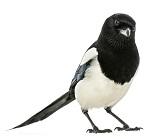
Bird: blue tit blackbirdmagpie rook
Week 1:
Week 2:
Total:
1. Which bird visited the most?
2. Which bird visited the least?
3. How many blue tits visited altogether?
4. Did more magpies or rooks visit?
5. Which was the busiest week?
Let’s investigate! Food survey
Choose one:

Ask 10 children: ‘Do you like this?’ Draw the tally marks. My vegetable Yes No
Let’s talk!
What kind of survey would you like to do? How would you plan it?
27 Unit 4: Data 1. Day 2, Lesson 2
Symbols
Maths eyes
Look for symbols in your classroom. Draw them.


Draw a simple symbol for playing indoors and playing outdoors.
Playing indoors Playing outdoors
Let’s investigate!
Ask 10 children: ‘Do you like playing indoors or outdoors the best?’
Use your symbols to make a chart.


28 Unit 4: Data 1. Day 3, Lesson 3
Title: 10 9 8 7 6 5 4 3 2 1 indoors outdoors Indoors or outdoors?
Pictograms
The children are recycling summer clothes. Write the totals in the tally chart.
Item: T-shirt shorts cap
Tally: Total:
Now, complete the pictogram. Use or draw your own symbol. Title: 5 4 3 2 1 T-shirt shorts cap
Clothes to be recycled
Let’s play!
● You will need a bag and 4 items that are the same except for colour, such as or .
● Take turns to pull out an item.
● Record it on the pictogram, then return it to the bag.
● The first player to record 5 of one colour wins the game. 5 4 3 2 1 red blue green yellow
29 Unit 4: Data 1. Day 4, Lesson 4
Let’s create!
Woodland Walk
1. Colour 1 2 of the cupcakes brown.
2. Colour 1 4 of them pink.
3. Leave the rest plain. What fraction are plain?
Time for a picnic in the woods! Colour the cupcakes.
Let’s talk!
Dara wants to share these sandwiches between 8 children. Should he cut them in halves or quarters?
Complete the bond and write the matching fact family for each.
30 Review 1
1. 2. 3.
+ = + = = = + = + = − = − = + = + = = = 300 300 3 30046
Jay saw these animals in the woods:
































D Complete this tally chart. Mark off each animal above as you tally.





Tally:
Total:
Let’s talk!
Can you use these words to talk about what Jay saw in the woods?
Try this! Sort the animals in D . Draw tally marks.
31 Review 1
Animal:
robin deer spider butterfly squirrel
the most the least more... than... less... than...
Can fly Cannot fly
Estimating and Measuring Time
Let’s investigate!
1. Estimate and then measure how long it takes to… (choose and ring one) link 20 linksthrow a 6write your name 5 times stick 20 cubes together

2. Colour your answers.



I will measure how long it takes in hours days seconds minutes
I will measure how long it takes using a calendar timer stopwatch clock 1st go 2nd go 3rd go
Estimated time:
Actual time: Compared to the estimate, the actual time was… (3) faster slower faster slower faster slower
Try this! The children raced to stack 10 cubes. Write who was 1st, 2nd, 3rd and 4th.
Mia 12 seconds
Lexi 8 seconds
Dara 7 seconds Jay 10 seconds
32 Unit 5: Time 1. Day 2, Lesson 2 Unit 5 Digital Resources
Days, Months and Seasons
Finish Jay’s chart.
1. Write the seasons above the correct months.
2. Colour the names of the months of...
(a) autumn orange.
(b) winter blue.
(c) spring green.
(d) summer yellow.
3. Draw a picture for each month.
Fill in the blanks.
1. There are …
(a) days in a week (b) months in a year.
(c) seasons in a year. (d) months in each season.
2. My birthday is the of
3. It is in the season of .
4. This year, my birthday is on a .
5. I could use a to find this out.
Let’s talk! Is Jay correct? Explain why. My birthday is on Friday the 8th of May every year.
Try this! Fill in the blanks. Mon Wed Sun Feb Apr Jun Jul Oct
33 Unit 5: Time 1. Day 3, Lesson 3
1 2 3 4 5 6 7 8 9 10 1 1 12 January February March A pri l May June July August September O ct ob e r N o v em ber December S S
Let’s talk!
The Calendar
How is this similar to other calendars you have seen?
How is it different?
Why, do you think, are some of the numbers red?
Look at November on the calendar.
1. How many… days? weekdays? weekend days? Fridays?
2. 3 the correct box.
There
There
3. The month after this month is . The month before this month is .
4. The last day of the month is a .
5. This month has 5 . (Hint: a day)
6. 3 the correct box. The season is: spring summer autumn winter
Let’s talk!
Answer the questions in again for October,
34 Unit 5: Time 1. Days 4 and 5, Lesson 4
end
days.
are more week
days than week
are less weekend days than weekdays.
November Mon Tues Wed Thurs Fri Sat Sun 1 23 4 5678 910 11 12 13 14 15 16 17 18 19 20 21 22 23 24 25 26 27 28 29 30 October Mon Tues Wed Thurs Fri Sat Sun 123 4 56 789 10 11 12 13 14 15 16 17 18 19 20 21 22 23 24 25 26 27 28 29 30 31 December Mon Tues Wed Thurs Fri Sat Sun 1 23 4 56 78 910111213 14 15 16 17 18 19 20 21 22 23 24 25 26 27 28 29 30 31
December and a different month.
O’Clock
Let’s talk! Are Dara and Lexi correct? I drew 4 o’clock. I drew 7 o’clock.
35 Unit 5: Time 1. Day 6, Lesson 5
3
9
o’cloc
o’cloc
o’cloc
o’cloc
hours
o’cloc
o’cloc
hours
5
8 o’cloc
hours later 12 o’cloc
o’cloc
2 hours later
Complete.
o’clock
o’clock hours later
k
k hours later
k
k
later
k
k
later
o’clock
k
k
k
1. 3. 5. 2. 4. 6.
Half Past
Write the missing numbers. Draw the missing hands.
half past half past half past half past
half past 4 half past 12 8 o’clock half past 6
half past half past half past o’clock
Let’s talk!
Look at the clocks in . Say what the time would be… (a) 1 hour later (b) 2 hours later (c) 1 hour earlier
Try this! Find 2 clocks in that show times that are…
1. 1 hour apart, and colour them green
2. 2 hours apart, and colour them red.
3. 3 hours apart, and colour them blue
36 Unit 5: Time 1. Days 7 and 8, Lesson 6
1. 2. 3. 4. 5. 6. 7. 8. 9. 10. 11. 12.
Estimating Time
This broken clock is missing a hand. Estimate and write the times.
Draw the missing hand for each time in .
3 the correct box.
The long minute hand was missing.
The short hour hand was missing.
3 the best answer for each.
nearly half past 2
exactly half past 2
just after half past 2
almost 9 o’clock
exactly 9 o’clock
just after 9 o’clock
almost half past 12
exactly half past 12
just after half past 12
37 Unit 5: Time 1. Day 9, Lesson 7
2. 3. 1. 2. 3. 4
It
It is... It is...
1.
. half
is...
Properties of 2-D Shapes
2-D shapes
1. Use the colour code to colour the shapes. triangle squarerectangle circle semi-circle oval
2. How many of each shape are there? (a) triangle (b) square (c) rectangle (d) circle (e) semi-circle (f) oval
3. Write an X in each corner of the shapes.
38 Unit 6 Digital Resources Unit 6: Shapes. Day 2, Lesson 2
2-D Shapes: Sides and Corners
Complete the table.
Shape: Example: Draw another example. How many straight sides? How many curved sides? How many corners?






Try this! Finish the patterns. Then, describe them to your partner without using the shape names. What is the same? What is different?
39 Unit 6: Shapes. Day 3, Lesson 3
1. 2. 3. 4. 5. 6.
2.
1.
Classifying 2-D Shapes
Match each shape to the correct label.
straight sides curved side
Let’s talk!
Which shape should be matched to both labels? Explain why.
Draw one shape in each space below.
1. 3 corners or less more than 3 corners
2. sides the same length sides different lengths
Try this! What capital letter might I be?
1. I have 1 straight and 1 curved side.
2. I have 1 curved side only.
40 Unit 6: Shapes. Day 4, Lesson 4
Shapes in Shapes
Use a ruler to draw straight lines.
This reminds me of fractions. What fraction names could you use for these?
1. Draw 1 line to make 2 rectangles.
2. Draw 1 line to make 2 triangles.
3. Draw 2 lines to make 4 triangles.
4. Draw 2 lines to make 4 squares.
5. Draw 1 line to make 2 triangles.
6. Draw 3 lines to make 4 rectangles.
7. Draw 1 line to make 2 squares.
8. Draw 2 lines to make 4 rectangles.
9. Draw 2 lines to make 4 triangles.
Square corners
1. In , draw a dot in all of the square corners.
2. Write M beside the shape(s) with the most square corners.
3. Write L beside the shape(s) with the least square corners.
Try this! Draw a 2-D shape without straight lines. Now, draw a straight line through it.
Can you name the shapes?
41 Unit 6: Shapes. Days 5 and 6, Lesson 5
Naming and Sorting 3-D Shapes
Match each shape to its name.
Let’s investigate!
What can these 3-D shapes do? 3 what each 3-D shape can do.
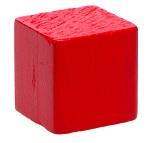

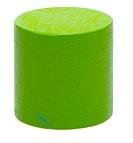


Roll Stack Slide
42 Unit 6: Shapes. Day 7, Lesson 6
cylinder
cube cuboid
sphere cone
1. 2. 3. 4.5.
3-D Shapes: Faces, Surfaces, Edges and Corners
Let’s talk!
What is the same in each set? What is different in each set?
Complete the table. How many…
3-D shape: Example: flat faces? edges? curved surfaces? corners?

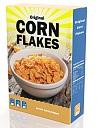



Maths eyes
What examples of the 3-D shapes in can you see in your classroom? Draw and label them with their shape name.
43 Unit 6: Shapes. Day 8, Lesson 7
1. 2. 3. 4. 5.
Building with 3-D Shapes
Let’s investigate!
Use . Will the shapes stay stacked? 3 or 7
Colour green the pieces needed to make the rocket. Colour blue the pieces needed to make the robot.
Let’s play!
Make a 3-D shape!
● You will need a .
● Take turns to throw the dice. For each number you throw, draw the shape on your mini-whiteboard.
● The first player to have enough 2-D shapes to make a , or wins the game.
44 Unit 6: Shapes. Day 9, Lesson 8
1. 2. 3. 4.
Number
1 2 3 4 5 6
2-D shape
Ring groups of ten to help you count. How many items in each box?










































Join the beads in order, starting with the smallest number.
Try
this!
from 75 to 94
numbers
93 96 79 73 83 45 Unit 7: Numbers to 100. Day 1, Lesson 1 Unit 7 Digital Resources
Mia is counting
3 the
she will say. Explain why.
Counting
1. 2. 3.
1. 2. 3. 44 43 42 37 36 41 38 39 40 63 62 61 64 59 60 65 58 57 92 93 100 95 94 99 96 97 98 Complete. 1. 2. 45 46 47 48 82 83 86 87 75, 76...
Let’s investigate!
Counting Groups
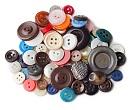
Choose a resource to count. In a container, put an amount that you think is between 30 and 90. Do not count!

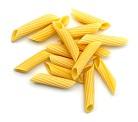
Draw one of what you are counting.
Make an estimate that is too big.
Make an estimate that is too small.
Make a reasonable estimate. Now count.
Total amount =
46 Unit 7: Numbers to 100. Days 2 and 3, Lesson 2 Unit 7: Numbers to 100. Days 2 and 3, Lesson 2
Complete. 1. 2 4 68 2. 30 405060 3. 4. 20 25 30 35 16 18 20 14 ? Try this! How many more to make 100? How many more?
Representing Numbers
Ring the models that show...
Shade each 100 square to show the number.
Did you need to count every small square? Explain why. Try this! 3 the ones that show
47 Unit 7: Numbers to 100. Day 4, Lesson 3
23 71 62
1. 46 2. 89 3. 70 1. 2. 3.
1. 2. 3. 4.
54.
Tens and Ones
Write each amount as tens and ones.
Write each amount as tens and ones. Complete the branching bond.
48 Unit 7: Numbers to 100. Day 5, Lesson 4
1. 2. 3. 4.
1. 2. 3. 4. 300 54 50 300 300 300 76 Tens Ones 5 4 Tens Ones Tens Ones Tens Ones Tens Ones 60 Tens Ones Tens Ones Tens Ones
drawn? Try this! Write different number sentences for the same amount. 1. 65 = 60 + 5 65 = + 2. 65 = + 65 = + 3. 52 = + 52 = + 4. 52 = + 52 = +
think I see a pattern.
Do you remember how quick cubes are
I
Comparing and Ordering Numbers
Ring the greater in each set if possible. Write <, > or =.
Ring the greater in each set if possible. Write <, > or =.
Fill in a number to make these true.
Try this!
1. Use two of the digits above each time to make... (a) the greatest number (b) the smallest number (c) two other numbers
2. Order your numbers.
49 Unit 7: Numbers to 100. Days 6 and 7, Lesson 5
1. 2. 3. 4.
1. 95 91 2. 30 25 3. 51 15 4. 74 7 + 4 5. 58 40 + 18 6. 60 + 15 65
˃ ˂ 1. 23
greater than 2. 9 is less than ˃ ˂ 3. is greater than 90 4. is less than 17 <
is
smallest greatest 1 3 9
Estimating Numbers
Write the ten before and after the number. Ring the nearest ten.
Draw an arrow from each number to its place on the number line. Ring the nearest ten.
Estimate the number at each arrow.
D Let’s talk!
What is the nearest ten to each of the numbers you wrote in ?
50 Unit 7: Numbers to 100. Day 8, Lesson 6
1. 2. 3. 4
.
1. 2. 3. 4.
23 71 94 85 20 30 34 56 79 65 30 405060 70 80 60 70 30 4050 01020708090100 60
Number Hunts
Maths eyes
I found the number 20 on the number wall.
1. Walk around the school. Find six numbers between 0 and 100. Write them and show them as a sketch.
2. Show where each of your numbers sits on the number line.
3. Round each of your numbers to the nearest ten.
Look for a car!
1. Write the reg plate number:
2. Use two of the digits each time to make:
(a) the greatest number
(b) the smallest number
(c) two other numbers


3. Order the four numbers above. smallest greatest
51 Unit 7: Numbers to 100. Day 9, Lesson 7
(a) (b) (c) (d) (e) (f)
(a)
(b) ➜ (c) ➜ (d)
(e) ➜ (f) ➜
➜
➜
0100
Let’s play!
The Toy Shop
● You will need and a .
● Throw the dice. Move your counter and say the answer. Start What is… 8. your birthday month? 16. the number of days in a week?
10. the 4th school day of the week? 13. the day after Saturday? Finish! 5. the day before Sunday?
7. the number of seasons in a year? 15. the 1st month of the year? 1. the day after Monday? 9. three days before Wednesday? 14. the season before spring? 17. today? 6. tomorrow? 2. the number of months in a year?
Try this! The children have these amounts of trading cards:
● Lexi > Mia, Jay or Dara
● Jay < Dara
● Dara < Mia
How many do they each have? 69 81 29 51
3. the day between Tuesday and Thursday?
12. this month? 4. the day two days after Sunday?
11. the last school day of the week?
52 Review 2
Maths eyes



Match each toy to a label. Maths eyes

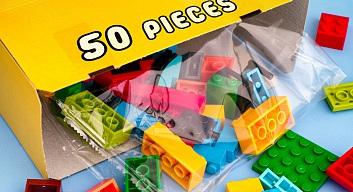

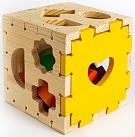

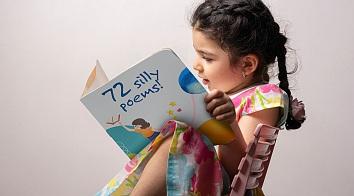
53 Review 2
Complete these. sixty- fifty ty-two = 60 + 50 = + 72 = + 300 300 300 64 60 4 1. 2. 3. has a curved surface has corners stacks has straight edges rolls has a flat face Try this! Show where each number in sits on the number line. 0102030 405060708090100
Adding 10 and 9
Use your and to model and solve these.
Use the stacked number paths to solve these.
Do you need to count back, or is there a quicker way?
= Think ‘add 10’ to solve these.
D Let’s talk!
Explain how you could use ‘add 10’ to add 8 in these: 8 + 5, 8 + 7, 8 + 6. If 10 + 5 is 15, then 8 + 5 has to be...
54 Unit 8: Addition and Subtraction 2. Day 1, Lesson 1 Unit 8 Digital Resources
1.
6
2. 10
8
so 9
3.
5
4
10
so
5. 10
so 9
4
6. 10 + 7 = so 9 + 7
10 + 6 = so 9 +
=
+
=
+ 8 =
10 + 5 = so 9 +
=
.
+ 2 =
9 + 2 =
+ 4 =
+
=
=
123 4 56789 10 11 12 13 14 15 16 17 18 19 20 1. 10
so
7
2. 10
3.
so
4
4
10
6
so 9
6
5.
so
6. 10
8
so 9
8
1. 9 + 3 = 2. 9 + 8 = 3. 9 + 4 = 4. 9 + 9 = 5. 9 + 6 = 6. 9 + 10 =
+ 7 =
9 +
=
+ 3 = so 9 + 3 =
10 + 4 =
9 +
=
.
+
=
+
=
10 + 2 =
9 + 2 =
+
=
+
Subtracting 10 and 9
Use your and to model and solve these.
Do you need to count back, or is there a quicker way?
Think ‘subtract 10’ to solve these.
D Let’s talk!
Explain how you could use ‘subtract 10’ to subtract 8 in these: 12 8, 13 8, 12 8. If 10 – 8 is 2, then 12 – 8 has to be...
55 Unit 8: Addition and Subtraction 2. Day 2, Lesson 2
1. 15 10 = so 15 9 = 2. 18 10 = so 18 9 = 3. 14 − 10 = so 14 − 9 = 4. 13 − 10 = so 13 − 9 = 5. 16 − 10 = so 16 − 9 = 6. 17 − 10 = so 17 − 9 =
the
paths
these. 123 4 56 789 10 11 12 13 14 15 16 17 18 19 20 1. 14 10 = so 14 9 = 2. 19 − 10 = so 19 − 9 = 3. 12 − 10 = so 12 − 9 = 4. 15 − 10 = so 15 − 9 = 5. 17 − 10 = so 17 − 9 = 6. 16 − 10 = so 16 − 9 =
Use
stacked number
to solve
1. 12 − 9 = 2. 17 − 9 = 3. 15 − 9 = 4. 18 9 = 5. 16 9 = 6. 13 9 =
Make Tens
Use your and move to help you make tens. 1. 9 + 8 = 2. 8 + 7 = 3. 9 + 2 = 4. 7 + 4 = 5. 8 + 5 = 6. 9 + 3 = Make tens. 1. 8 + 6 = 2. 7 + 5 = 3. 9 + 7 = 4. 8 + 4 = 5. 9 + 6 = 6. 7 + 6 =
Solve these in a way of your choosing. 1. 9 + 4 = 2. 6 + 7 = 3. 3 + 8 = 4. 5 + 9 = 5. 7 + 9 = 6. 7 + 8 = You can move amounts in either direction. 9 + 4 9 + 4 1 10 7 1 10 1 2 10 3 2 10 2 10 5 3 10 1 1 10 2 3
56 Unit 8: Addition and Subtraction 2. Day 3, Lesson 3
+1 +6 10 3 310
Fact Families
Let’s play! Add Snap

● You will need Remove the J, Q and K.
● Play in groups of three. One player is the dealer.
● The dealer should split the deck and turn over the top two cards.
● The first player to call out the total of those cards wins the cards.
● The player with the most cards at the end wins the game. They become the dealer next.
57 Unit 8: Addition and Subtraction 2. Days 4 and 5, Lesson 4
Write the matching fact family f
each
these. 1. 2. 3. 7 + 4 = 8 + = + = + 7 = + 8 = + = 11 − 7 = 17 − = − = 11 − = 7 17 − = − = 4. 5. 6. + = + = + = + = + = + = − = − = − = − = − = − =
or
of
300 11 7 4 300 17 89 300 4 16
Subtraction as Difference
Write the matching number sentences.
difference = difference = 9 6 = 20 = 3. 4. 5.
Use the number line to find the difference.
Let’s talk!
How could you check your answers for and ?
Let’s play!
Difference Snap
● Play as you played Add Snap, but this time the first player to call out the difference between the cards wins the cards.
● For example, if the dealer turns over , you should call out 8 (10 2). 12 ? 20
58 Unit 8: Addition and Subtraction 2. Day 6, Lesson 5
1.
= =
2.
=
1. 16 − 9 = 2. 12 − 6 = 3. 15 − 11 = 4. 13 − 8 = 5. 14 − 7 = 6. 19 − 5 =
6 5 4 3 2 1 07 89 10 11 12 13 14 15 16 17 18 19 20 ?
this
less, but bigger jumps. ?
I think
can be done faster, using
Just Tens
Write each matching number sentence.



























Build
This is called the column method.
59 Unit 8: Addition and Subtraction 2. Day 7, Lesson 6
1. 2. 3. 30 + 40 = 20 + = + = 4. 5. c + c = c c + c = c 6. 7. 8. 90 – 30 = 60 – = – = 9. 10. € 80 − € = € € 60 − € = €
or draw models to help
solve these. 1. TO 2. TO 3. TO 4. TO 10 50 30 20 +70 + 4 0+ 60 +50 5. TO 6. TO 7. TO 8. TO 50 70 80 90 –3 0– 4 0– 50 –7 0
+ ++ ++
you
Adding and Subtracting Tens with Two-digit Numbers
Use or your 100 square to model and solve these.
Try this! Write the matching number sentence and then solve.
1. Dara had 27 snowballs. Lexi gave him 20 more. How many does Dara have now?
2. Mia had 31 snowballs. Monty took 10. How many does Mia have left?
3. Jay had 35 snowballs. He threw 30. How many does Jay have left?
60 Unit 8: Addition and Subtraction 2. Days 8 and 9, Lesson 7
Complete each cut-up 100 square strip. 358 24 13 15 18 34 23 25 4239 33 52 49 62 81 76 91 86
1. 67 + 10 = 2. 79 + 20 = 3. 34 + 40 = 4. 58 + 30 = 5. 56 10 = 6. 73 30 = 7. 85 50 = 8. 94 80 =
=
=
= 67 + 10 +
Left and Right
Colour the arrows pointing left green and the arrows pointing right red.
Read first, then draw a...
1. in the bottom left corner 2. in the bottom right corner
61 Unit 9: Location and Transformation. Day 1, Lesson 1 Unit 9 Digital Resources
3. to the left of 4. to the right of
5. to the left of the .
Turns
Match each label to the correct arrow.
half turn anti-clockwise
quarter turn clockwise
quarter turn anti-clockwise
Look at Monty. Match.
full turn clockwise
half turn clockwise
full turn anti-clockwise
If Monty does a… he will be facing the…
1. full turn clockwise
2. half turn anti-clockwise
3. quarter turn clockwise
4. quarter turn anti-clockwise
5. full turn anti-clockwise
I think some of these have the same answer.
62 Unit 9: Location and Transformation. Days 2 and 3, Lesson 2
Directions
Match each arrow to the correct label. turn left turn right backwards forwards
Look at the map. The bot always starts in the centre. If Mia enters the directions below, where does the bot end up?
63 Unit 9: Location and Transformation. Days 4 and 5, Lesson 3
forest bridge pond beach cave shop bench castle Directions: Ends up at the: 1. 2. 3. 4. 5. GO GO GO GO GO GO
Symmetry
Maths eyes
Use a ruler to draw the line of symmetry on each picture.

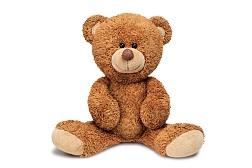

Try this! Draw more than one line of symmetry.

Use symmetry to draw the other half of Dara’s glasses.
Tick the symmetrical letters. Draw the line of symmetry.
Try this! You will need and 2-D shapes.
Trace and cut out a , , and . Fold to find lines of symmetry.
How many lines of symmetry did you find?
64 Unit 9: Location and Transformation. Day 6, Lesson 4
1. 2. 3. 4.
1. 2. 3. 4.
1.
2. P 3. D 4. N 5. E 6. L
C
1. 2. 3. 4. 4.
1. 2. 3. 4.
Moving Shapes
Did it turn, slide or flip? Use the colour code to colour the shapes.
Let’s talk!
Can you describe each move in ?
Use these words if you can: clockwise anti-clockwise up down
Could any shapes have been moved in more than one way?
Draw each shape after... 1. a quarter turn clockwise 2. a half turn anti-clockwise.
Try this! Turn, slide or flip to fit all three shapes in the grid. Colour.
65 Unit 9: Location and Transformation. Day 7, Lesson 5
turn slide flip 1. 2. 3. 4.5.6.
Tessellations
Let’s investigate!
Use 2-D shapes. Can you make a tessellation with no gaps? 3 or 7
Draw one of the tessellations you made.
Can you make a tessellation with two different shapes? Draw it.
D Finish these tessellations. Make colour patterns.
66 Unit 9: Location and Transformation. Days 8 and 9, Lesson 6
1. 2. 3.
Comparing and Ordering Lengths and Heights
Put these in order. 1 = shortest.


Maths eyes




Find and draw items in the classroom that are... longer than this book shorter than this book wider than this book
Let’s talk!
Did you find anything about the same length as the book? Try this! 1. Draw a marker twice as long here. 2. Draw a marker half as long here.

67 Unit 10: Measuring 1. Day 1, Lesson 1 Unit 10 Digital Resources
Measuring Length
Match each object to the best measuring tool.



Let’s play!


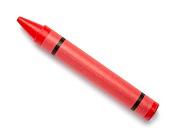
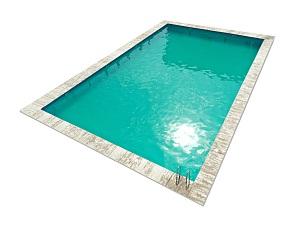

Teabag Throw!
● This is a game for 2–4 players.
● You will need a teabag and a measuring tool.

● What will you use: strides, sticks, cubes or something else? We will measure the distance in .
● Take turns to throw the teabag and measure how far it went.
● Record it in the table.
● The player with the longest throw after three throws each wins the game.
68 Unit 10: Measuring 1. Day 2, Lesson 2
Players
canes cubes
Tools
1st throw 2nd throw 3rd throw
lollipop sticks
Metres
Maths eyes
Find and draw things that are...
1. about a metre long 2. longer than a metre
3. < a metre but > half a metre 4. < half a metre
Estimate and then measure each one in turn.
Classroom side 1 metres
Classroom side 2 metres metres
Yard side 1 metres
Yard side 2 metres
Let’s talk!
Which side was the longest?
What do we call the longest side, and the shortest side?
69 Unit 10: Measuring 1. Days 3 and 4, Lesson 3
Estimate Measure
metres
metres
metres
Continue the patterns.
Continue the patterns. Ring the core in each.





















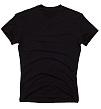





Try this! Colour each scarf in a different pattern. Use two colours.
70 Unit 11: Patterns. Day 1, Lesson 1 Unit 11 Digital Resources
Finding Patterns
1. 2. 3.
1. 2. 3. 4.
core
Describing and Making Patterns
Complete the patterns. Each pattern’s core has three elements.
Use to draw three different pattern cores.
Use your cores from to draw three patterns.
Try this! Use . Choose three colours. How many different patterns can you make? Record them in your copy.
71 Unit 11: Patterns. Day 2, Lesson 2
1234567
10 1. 2. 3. 4.
3.
89
1. 2.
1. 2. 3.
core
Growing or Shrinking Patterns
Draw the next two terms and write the numbers.
In , which were...
(a) growing patterns? __________ (b) shrinking patterns?
72 Unit 11: Patterns. Day 3, Lesson 3
1. 2. 3. 4
.
D Write the missing terms. Use your 100 square.
1. 1, 3, 5, 7, , ,
2. 6, 8, 10, , ,
3. 30, 25, 20, , ,
4. 45, 50, 55, , ,
5. 90, 80, 70, , , Let’s talk!
For each pattern in D , explain its rule: Was it growing or shrinking? By how much each time?
Try this!
1. Make a growing or shrinking pattern, using materials or numbers.
2. Challenge your partner to work out the rule of your pattern.
How much a pattern changes each time is called its rule.
73 Unit 11: Patterns. Day 3, Lesson 3 Colour the even numbers green and the odd numbers yellow. What other patterns do you notice? 123 4 56789 10 11 12 13 14 15 16 17 18 19 20 21 22 23 24 25 26 27 28 29 30 31 32 33 34 35 36 37 38 39 40 41 42 43 44 45 46 47 48 4950
The City
Add. Use the colour code for totals to colour the picture.
10 = green 15 = yellow 16 = blue
17 = purple 18 = orange 20 = red
Let’s talk!
In , which strategies did you use? Explain why.
74 Review 3
4
16 8 + 8 11 + 4 18 + 2 6 + 10 9 + 6 3 + 17 9 + 7 1 + 9 10 + 8 5 + 5 9 + 9 8 + 2 7 + 11 1 + 9 9 + 8 10 + 7 6 + 11 6 + 14 7 + 3 1 + 19 7 + 8 7 + 13 4 + 6 10 + 10 3 + 12 8 + 12 10 + 0 15 + 5 14 + 1 11 + 9 11 + 5 13 + 4 A B D C
+
Write the answers.
1. In , which building is the tallest?
2. Which building is the shortest?
3. Write ‘taller’ or ‘shorter’.
(a) A is than B.
(b) C is than D.
(c) B is than C.
(d) D is than A.
D
Let’s talk!
Can you use these words to describe the buildings in ? left right symmetrical not symmetrical
What do you notice about the colours of the windows?
Let’s create!
Using classroom resources, make a pattern similar to the windows in…
1. building A 2. building B 3. building C.
Let’s investigate!
You will need a metre stick, a toy car, and items from the classroom to build a ramp.
3 how far your car travelled each time.
1st go
2nd go
3rd go
75 Review 3
Less than (<) half a metre More than (>) half a metre, but less than (<) a metre About a metre More than (>) a metre
Adding without Renaming 1
Draw quick cubes to solve these.
Use your 100 square or number line to solve these.
Use the column method to solve these.
D Let’s talk!
Could you do any of in your head? Which ones? How?
Try this! Jay saw 22 and Lexi saw 7. Write a number sentence. =
76 Unit 12: Addition and Subtraction 3. Day 1, Lesson 1 Unit 12 Digital Resources
1. 25
4
2. 32 + 6 = 3. 42 + 3
+
=
=
1. 41 + 5
2. 98 + 0 = 3. 4 + 53 = 4. 73 + 6 = 5. 82 + 4 = 6. 2 + 61 = 7. 94 + 4 = 8. 5 + 82 = 9. 3 + 93 =
=
1. TO 2. TO 3. TO 4. TO 5. TO 82 53 23 61 92 +7+3+5+8+2
TO TO TO
Subtracting without Renaming 1
Cross out blocks to solve these.
Use your 100 square or number line to solve these.
Use the column method to solve these.
D Let’s talk!
Could you do any of in your head? Which ones? How? How could you check your answers?
Try this!
2. Tell your partner a maths story to match the sentence. 5 6
1. Use two of the digits above to make a subtraction sentence. 9
77 Unit 12: Addition and Subtraction 3. Day 2, Lesson 2
1. 28
2. 36 3
3. 4
7 =
=
7 5 =
1. 63 3 = 2. 59 6 = 3. 81 0 = 4. 98 − 6 = 5. 75 − 4 = 6. 48 − 8 =
1. TO 2. TO 3. TO 4. TO 5. TO 89 58 97 66 78 −7− 4 −6− 4 −5
TO TO TO
− =
7 8
Adding without Renaming 2
Use to model these. Use branching to show what you did.
Use the open number lines to model and solve these. 1. 22 + 18 = 2. 34 + 25 =
Let’s talk!
With your partner, estimate the answers to D
D Use the column method to solve these.
For example, will the answers be sixty-something, seventy-something…?
Try this!
1. Use your 100 square to check your answers to , and D .
2. Explain to your partner how you did this.
78 Unit 12: Addition and Subtraction 3. Day 3, Lesson 3
1. 2. 3. 4. 26 + 13 = 24 + 34 = 31 + 45 = 43 + 54 =
1. TO 2. TO 3. TO 4. TO 5. TO 63 4 23 1 4 37 3 +21 + 4 7+ 4 7+ 55 +23 50 8 30 9 39 22
Subtracting without Renaming 2
Cross out blocks to solve these.
1. 49 14 = 2. 58 25 = 3. 67 36 =
Use the open number lines to model and solve these.
1. 48 11 = 2. 67 23 =
Write a number sentence for these.
1. Monty buried 18 and Dara dug up 11. How many were left?
2. Dara planted 26 and Monty dug up 12! How many were left?
D Use the column method to solve these.
Try this!
1. Use your 100 square to check your answers to , and D .
2. Explain to your partner how you did this.
79 Unit 12: Addition and Subtraction 3. Days 4 and 5, Lesson 4
48
1. TO 2. TO 3. TO 4. TO 5. TO 38 57 4 89 97 6 −26 −15 −2 4 −88 −5 4 TO TO TO 26
Renaming Ones as Tens
Use to model these. Make sticks of ten and write as tens and ones.
Use to model these. Make sticks of ten and write as tens and ones.
80 Unit 12: Addition and Subtraction 3. Day 6, Lesson 5
1. 2. 3. 4.
1. 2. 3. + = + = + = 4. 5. 6. + = + = + = Move cubes to make a ten. 1. 2. 3. 4. TO TO TO TO TO TO TO TO TO TO TO TO TO TO 9 + 3 = + = + = + = + + + +
Adding with Renaming 1
Use to model these. Use branching to show what you did.
Use the open number lines to model and solve these.
Use to model these. Use the column method to show what you did.
D Let’s talk!
Look at Mia’s strategy. Can you explain it to your partner? Use this strategy to check the answers in
I can solve these by moving ones to make friendlier numbers.
81 Unit 12: Addition and Subtraction 3. Day 7, Lesson 6 64
1. 2. 3. 4. 26 + 9 = 55 + 8 = 37 + 7 = 46 + 6 =
1. 64
9
2. 78 + 8 = 3. 84 + 7
4. 69 + 9
+
=
=
=
1. TO 2. TO 3. TO 4. TO 5. TO 17 38 19 8 4 5 +9+7+6+ 66 +5 26
50 13 20 15 35 1
64 + 9 = 73 63 10 1
Adding with Renaming 2
Use to model these. Use branching to show what you did.
Use to model these. Use the column method to show what you did.
Let’s talk!
Explain how you could check the calculations in , using…
● an open number line
● a hundred square
● moving ones to make friendlier numbers.
Let’s play!
Chance Calculations
● You will need a .
● In pairs, take turns to throw the dice, and write the number in one of the grey boxes.
The youngest player can go first.
● When all of the grey boxes are filled, calculate your answer on your mini-whiteboard and write it in the red box.
● The player with the greater answer wins the game.
82 Unit 12: Addition and Subtraction 3. Days 8 and 9, Lesson 7
1. 2. 3. 4
25 + 27
45 + 19
38 + 28
56
34
.
=
=
=
+
=
1.
3. TO 4. TO 5. TO 4 53 87 35 62 2 +37 +58 +26 +2 4 +69 82
TO 2. TO
40 12 1 2 + =
Comparing and Ordering Weight
Compare the weight.
1. Write the correct sign: greater than >, less than < or equals =.
2. Match. Ring the heaviest. is lighter than the is heavier than the Write H for heavier or L for lighter under each side.
Let’s talk!
Describe each of the balance pictures in , using these words: is heavier than is lighter than
Try this!
1. Ring the heaviest item in .
2. Underline the lightest item in How do you know?
83 Unit 13 Digital Resources Unit 13: Measuring 2. Day 1, Lesson 1
(a) (b) (c) 1. 2. 3. (d) MILK 2L JUICE 1L JUICE 1L
Measuring Weight
Let’s investigate!
1. Weigh a small object using different units.
Object: cubes bears
What unit will you choose?
2. Use other small objects. Choose your units. Complete the table. Choose object Estimate Weigh Difference
3. Use larger objects. Choose your units. Complete the table.
Choose object Estimate Weigh Difference
Let’s talk!
In , which unit do you think was better to use? Explain why.
Try this! Dara measured the weight of the red box and the blue bag in cubes. True or false? 3 or 7
1. The box is heavier than the bag.
2. They both weigh the same.
3. Two boxes would weigh 6 cubes.
4. Two bags and a box would weigh 7 cubes.
84 Unit 13: Measuring 2. Days 2 and 3, Lesson 2
Kilograms
Maths eyes
Find and draw things that weigh... about 1 kilogram more than 1 kilogram less than 1 kilogram
Let’s investigate!
Complete the table. How many make about 1 kilogram (1kg) in weight?
Estimate Measure
Maths books
Maths copies
Try this!
ks
1. What is the weight of the cat food? kg
2. What is the weight of dog food, if it is twice the weight of the cat food? kg carrots = 1kg potatoes = 3kg cat food = carrots + potatoes
85 Unit 13: Measuring 2. Day 4, Lesson 3
boo
boo
ks
Comparing and Ordering Capacity Match, then put in order.
The liquid in the containers was poured into identical jugs. Fill in the boxes. Write >, < or = in each circle.
Try this!
1. Ring the correct answer in each of these.
(a) The / / holds the most. (b) The / / holds the least. 2. 1 = = =
86 Unit 13: Measuring 2. Day 5, Lesson 4
full almost full half full quarter full empty AB CD E C
<
<
<
<
AB
CD
2.
3.
4
5. C D 6. A D 7. C B 8. B D 9. A C empty full
1. holds the most.
holds the least.
and hold the same amount.
. A B
Measuring Capacity
Let’s investigate!
Complete the table and answer the questions.
Choose a container Estimate MeasureDifference
1. Ring the container with the greatest capacity.
2. Underline the container with the least capacity. How do you know?
Fill in the boxes.
4. 5. 6. =
Capacity jug = glasses jar = glasses vase = glasses
Try this! 3 which holds more in . 1. 1 jug or 3 glasses 2. 2 jugs or 6 glasses 3. 1 jar or 4 glasses 4. 2 jugs or 1 vase 5. 1 vase or 6 glasses 6. 3 jars or 1 vase jar jug vase glasses glasses glasses
jug + jar = glasses vase + jug = glasses vase + jar = glasses
87 Unit 13: Measuring 2. Days 6 and 7, Lesson 5
cups cups cups cups cups cups cups cups cups
3.
Object
1. 2.
== Object
Capacity
Litres
Maths eyes
Estimate the capacity. Is it greater than (>), less than (<) or the same as (=) 1 litre?




Let’s investigate!




Estimate, then measure. How many are in 1 litre (1l)?
Estimate Measure cups bottles scoops
Try this!
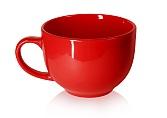


88 Unit 13: Measuring 2. Day 8, Lesson 6
1. 2. 3. 4. 1 litre 1 litre 1 litre 1 litre 5. 6. 7. 8. 1 litre 1 litre 1 litre 1 litre
= 1litre 1. 1l milk = 2l milk = glasses 3l milk = glasses = 2 litres = = = litres 2.
Use the colour code to match the times.
6 o’clock
12 o’clock half past 6half past 12
12 3O 6OO126 3O OO
Show these times on the analogue clocks.
1. 7:30 wake up 2. 8:00 breakfast
1. 1 hour later than each of the times in 2. 1 hour earlier than each of the times in .
It is ten thirty. No, it is half past ten at night. Try this! In your copy, write or draw the times that are...
Let’s talk!
Look at Dara and Lexi.
What do you think? Explain why.
89 Unit 14: Time 2. Days 1 and 2, Lesson 1 Unit 14 Digital Resources
Digital Time
5.
6. 1:00
7. 2:00
k
8. 3:00
3. 9:00 school begins 4. 11:00 break begins
12:30 lunch begins
lunch ends
brea
begins
school ends
Write the digital
and
A Day
correct word
90 Unit 14: Time 2. Day 3, Lesson 2
1.
2.
day? 3.
day? 4.
starts
ends at . 5. Noon
name for 6:00 5:00 4:00 3:002:00 1:00 12:00 11:00 10:009:00 8:00 7:00 6:00 5:00 4:00 3:002:00 1:00 12:00 11:00 10:00
7:00
Midday 12 6 9 3 2 10 84 7 5 1 11 1. 4. 2. 5. 3. 6.
time
the
below. afternoon morning midnight night evening midday This represents the hours in one full day:
Colour the hours of the... (a) morning yellow (b) afternoon red (c) evening green (d) night blue.
How many hours in a
How many hours in half a
Each day
and
is another
9:00 8:00
Midnight
TV Timetable
Match each programme to the correct clock.
4:00 Cartoon Time
4:30 Kid’s Got Talent!
5:30 Top Cooks
6:00 News
6:30 Big Movie
8:00 Jungle Madness
9:00 Rugby
Shade in the hour bars to show how long each programme lasts.
4:00 Cartoon Time
4:30 Kid’s Got Talent!
5:30 Top Cooks
6:00 News
6:30 Big Movie
8:00 Jungle Madness
Which one lasts the longest?
Let’s talk!
If you were allowed watch 1 hour of TV per day, what would you choose to watch?
When does your chosen programme... (a) start? (b) end?
Which programme starts... (a) just after your programme? (b) just before your programme?
What is on TV 1 hour (a) later? (b) earlier?
Choose another programme and answer the questions again.
91 Unit 14: Time 2. Day 4, Lesson 3
1 hour 1 hour 1 hour 1 hour 1 hour 1 hour 1 hour 1 hour 1 hour 1 hour 1 hour 1 hour
The Garden Centre
Estimate first and then count. Add.
1. How many?
2. How many?
3. How many altogther? Estimate Estimate Count Count How many did they each buy?
Maths eyes
Estimate the weight. Is it greater than (>), less than (<) or the same as (=) 1 kilogram (1kg)?




92 Review 4
1. 2. 3. 4.
1. 3. 4. 1kg 1kg 1kg 1kg TO + TO + TO + TO + TO + 18 25 15 25 25 18 25 18 18 15 15
D Maths eyes
Estimate the capacity. Is it greater than (>), less than (<) or the same as (=) 1 litre (1l)?



Garden centre fun day! Draw the correct times. 1. 10:00 tour

Try this!
1. Write the time at which each class ends.
(a) pottery class:
(b) gardening class:
2. In your copy, write or draw the times that are:
(a) 1 hour later than each of the times in .
(b) 1 hour earlier than each of the times in
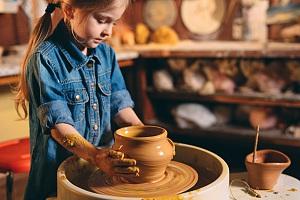

93 Review 4
1. 2. 3. 4. 1l 1l 1l 1l
3.
5. 3:00 gardening class (1 hr) 6. 4:00 home time
2. 11:00 treasure hunt
12:30 pottery class (1 hr) 4. 1:30 face painting
Euro Coins
Draw the missing coins in each growing or shrinking pattern. Colour.
In each row in ...
1. ring the coin worth most 2. 3 the coin worth least.
Let’s talk!
Why are the coins sorted this way?
Can you find more than one way of sorting the coins?
Try this!




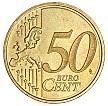

94 Unit 15 Digital Resources Unit 15: Money. Days 1 and 2, Lesson 1
1. 2. 3. 4.
10c 20c
Make: Draw two coins. Draw four coins. Draw five coins.
Trace, then write.
Notes and Coins
Estimate, count and write the total.

























Estimate: Total:
Draw.
1. Draw three notes to pay
2. Draw four notes to pay for a €20 . for a €50 .






Try this! Use Give your partner €33, using the least amount of coins and notes.
95 Unit 15: Money. Day 3, Lesson 2
1. 2. 3. 4. 5. € € € € € € € € € €

























Let’s play!























● You need a and .
● Throw the dice.
● Collect that number of coins.
● Add their value.
The first player to 3 all four target amounts wins the game.
● 3 a target amount if you get it, then return the coins to the pile.
● Target amounts:



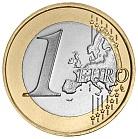
96 Unit 15: Money. Day 4, Lesson 3 More, Less or Equal? Write >, < or = in the circles. 1. 2. 3. 4. 5. 6.
Counting and Making Amounts
Find the totals. Then, write who has the same amount.







Lexi has:



























































97 Try this! Use Monty buried different amounts of money, but which coins were they? Unit 15: Money. Day 5, Lesson 4
Total:
2.
Total: c 3.
Total: c 4
Total: c 5.
Total: c
have the same amount. Match the amounts. 1. 2. 3. 4. He buried: These were the coins: 1. 82c 2.
3. 76c
1. Mia has:
c
Monty has:
. Jay has:
Dara has:
and
49c




The Garden Shop
Use . Draw the coins that the children will need to pay for each item.
We want to buy these things for growing our own food!
98 Unit 15: Money. Day 6, Lesson 5
1. 2. 3. 4
6.
. 5.
€2 85c 29c 38c 62c €1





How much more does Mia need to buy this?




How much more does Jay need to buy this?












How much more does Lexi need to buy this?
How much more does Dara need to buy this?
How much more does Mia need to buy this?
99 Unit 15: Money. Day 6, Lesson 5
and
number line. How much more? 1. 2. 3. 4. 5. c c c c c
Use
the
15c 28c 29c 39c 18c I have I have I have I have I have 0102030 40
Finding Totals
Let’s talk!
Look at the seeds.
What is the lowest price, and the highest price?
If Mia has 30c, what can she buy?
If Jay has 50c, what can he buy?












100 Unit 15: Money. Day 7, Lesson 6
Use
Add. 1. 2. 3. 4. Use . Add. 1. 2. c c c €
Make €1, using five coins.
85c 49c 38c 18c 18c 28c 29c 29c 49c 62c €2 €1 29c + 38c 29c + = c 15c 39c + = c +++
.
Try this! Use
Now, find two more ways!
Dara collected these marbles:




















Think of a sorting rule for Dara’s marbles. Write labels and complete this tally chart. Mark off each marble as you tally.
pictogram.
Dara’s marbles
Let’s talk!
Can you think of a different sorting rule for Dara’s marbles? How would the tally change?
101 Unit 16: Data 2. Day 1, Lesson 1 Unit 16 Digital Resources
Pictograms
Tally: Total:
Title: 8 7 6 5 4 3 2 1 _____________ _____________ _____________
Complete this
Block Graphs
Let’s investigate! Which do you prefer to do at break time?
1. Ask 10 children. Record how many for each. chasing ball games skipping reading

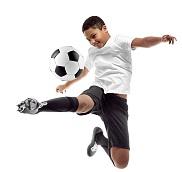
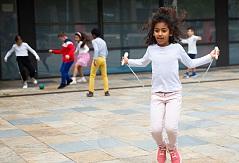

2. Colour the for each activity a different colour.
3. Use to make a block graph.
4. Now, fill in your block graph below and give it a title.
Title:
3 2 1 chasing
102 Unit 16: Data 2. Day 2, Lesson 2
Make a block graph. You will need .
1. Empty out your pencil case and sort the contents. Record your findings.

2. Use to make a block graph.
3. Now, fill in your block graph below and give it a title.
Title: 2 1
103 Unit 16: Data 2. Day 2, Lesson 2
_________________ _________________
Comparing Data Displays
How many of each teddy does Jay have?
Mia has: Jay has: Jay’s total:


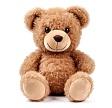

Fill in the block graph to show Jay’s teddies. Give it a title.
Title: dog cat bear elephant
Answer these.
1. Who has more dogs, Jay or Mia?
2. Who has less bears?
3. Who has the most teddies altogether?
104 Unit 16: Data 2. Day 3, Lesson 3
4 3 more 76 less 92 less 3the same
Mia’s teddies 9 8 7 6 5 4 3 2 1 dog cat bear elephant
Comparing and Ordering Area
Order the areas from greatest to least.
Maths eyes
Draw classroom items that have an area... greater than this book less than this book the same as this book
Try this! Lexi folded three sheets of paper in different ways. She coloured in one section of each. Which colour covers the greatest area? Explain why. Fold sheets of paper to help you find out.
105 Unit 17: Measuring 3. Day 1, Lesson 1 Unit 17 Digital Resources
1. 2. > > > > 3. 4. > > > >
A B C A B C A B C A B C
Measuring Area
How many of each unit is needed to cover your desk?



. other:
How many of each unit is needed to cover your maths copy?
Estimate Measure
other:
Let’s talk!
Which units above were the most useful, and the least useful? Explain why.
Try this! Dara does not have enough playing cards to measure the area. What is the total amount of cards needed to fill each area?
106 Unit 17: Measuring 3. Day 2, Lesson 2
Units
1. 2. 3. 4
Estimate Measure
Units
1. 2. 3.
1. 2. 3. Copy
Square Units
How many of each unit is needed to cover a mini-whiteboard?
Square units
1. cubes
2. Post-its
3. base ten blocks


4. other:
Estimate Measure Difference
Look at the geoboard shapes and fill in the answers.
1. Two shapes with the same area are and .
2. B is twice the area of .
3. A is half the area of .
4. Which shape has the greatest area?














































































































Let’s talk!

Do you think Jay’s geoboard shape is a square or a rectangle? The area of my shape is 14 squares.
Try this! What is the area of each lunch box? How do you know?
107 Unit 17: Measuring 3. Day 3, Lesson 3
1. A = sq units 2. B = sq units
A B C AB E C D G F
3. C = sq units
Number Sentences
Write =, ≠, < or > to make these true.
3 6 2. 9 5 3. 21 12 4. 40 35
Write number sentences for each picture.
I think that there might be more than one correct answer for some of these.
Try this! Write one more number sentence for each picture in .
108 Unit 18: Number Sentences. Days 1 and 2, Lesson 1 Unit 18 Digital Resources
5.
7.
5 8. 9
5 8
9 9. 7 + 7 + 7 8 + 8 10. 15 8 + 5 + 2
1.
10 + 4 15 6. 17 1 + 7
6 + 6 7 +
+
+
1. 2. + = + = + = + = > + ≠
1.
2. + =
+ =
Subtraction Number Sentences
Look at the picture. Write subtraction number sentences for your partner.
Draw a picture for each subtraction number sentence.
Match each story to the correct number sentence. Dara had 17 shells, but he lost 5.
Try this! Tell your partner a subtraction number sentence. Ask them to make up a story for it.
109 Unit 18: Number Sentences. Days 3 and 4, Lesson 2
– = – = – = – =
1. 2. 3. 10 – 4 = 14 – 7 = 13 – 12 =
Lexi
Mia had 12
ound 5 more. There were
17 + 517 – 512 + 512 − 5
counted 12 crabs, but then 5 ran away.
shells and f
17 children and 5 adults at the beach.
Subtracting with Renaming 1
Use to model and solve these.
2. 3. 4.
Use number lines to model and solve these. 1. 22 − 9 = 2. 31 − 6 =
Write a number sentence and use a number line to solve these.
1. 35 dogs were in line for the 7 ran away. How many were left?
2. 22 children were in line for the . 9 changed to the . How many were left?
110 Unit 19: Addition and Subtraction 4. Day 2, Lesson 2 Unit 19 Digital Resources
1.
TO TO TO TO 8 =− 4 = TO TO TO TO − 7 =− 9 = 22 27 28 29 30 31 32 33 34 35 36 37 38 39 40 12 13
4 15 16 17 18 19 20 21 22
4 25 BEST DOG = − =
1
23 2
Subtracting with Renaming 2
Use to model and solve these. Cross out to show what you did.
Let’s talk!
With your partner, estimate the answers to .
Use the column method to solve these.
For example, will the answers be twenty-something, thirty-something…?
D Choose a different way to do , to check your answers. You could use:
● a 100 square ● an open number line ● addition ● a different way.
111 Unit 19: Addition and Subtraction 4. Days 3 and 4, Lesson 3
1. 22 − 17 = 2. 37 − 19 = 3. 40 − 14 = 4. 48 29 = 5. 54 36 = 6. 56 28 =
1. TO 2. TO 3. TO 4. TO 44 52 61 67 –2 7– 38 –2 6– 39 5. TO 6. TO 7. TO 8. TO 50 4 36 37 1 –3 7– 2 4 – 4 8– 37
14 3
The Beach
Let’s talk!
A group of people were asked their favourite thing to do at the beach. These were their choices:
Title: Favourite thing to do at the beach
Play
Sur





Make up sentences about the graph. Use the following words: most popular least popular equally popular half twice
How might you find out how many people were asked?
Do you think the people asked were adults or children? Explain why.
Beach treasure!
1. The children found these coins in the sand. Write the total value.




(a) Lexi: c





(b) Mia: c





(c) Jay: c
(d) Dara: 74 c
2. Draw the coins that Dara might have found.
3. (a) Who found the least?
(b) Who found the most?
112 Review 5
f
Build Relax Picnic 123 4 56789 10
Try this! Later, Mia found six more coins. Their total value was more than 50c, but less than 100c. There were no 1c or 10c coins.
1. What six coins might she have found? c c c c c c
2. What is their total value? c
Match each story to the correct number sentence.
74c − 14c = 60c
80c = 15c + 65c
88c = 74c + 14c
D Picnic blanket area
Dara had 14c. Then, he found 74c.
Lexi found 48c. Then, she found two 5c coins.
Mia found 65c. Then, Jay gave her three 5c coins.
65c + 5c = 70c
58c = 10c + 48c
= 48c + 12c
1. Look, but do not count! Which picnic blanket do you think covers… (a) the greatest area? (b) the smallest area?
2. Count and write the area of each blanket in square units.
Let’s create!
Design your own picnic blanket in your maths copy It must have an area of 24 square units. Is there more than one way to do this?
113 Review 5
60c
A B C sq units sq units sq units
MILK
STEM Challenges and Investigations
Design and Make Cycle
1. Explore What could you design? What could you make?
● What do you need to do?
● What could you use?
● How will you do it?
2. Plan Plan and design your solution.
● Draw it.
● List what you need.
● Explain why to your group.
3. Make Think about your plan and what it needs to do. Then, make or build it.
4. Evaluate Test it.
● Does it do what it needs to do?
● Does it work well?
● Might it work better if…?
Design and make something to stop an egg from breaking when dropped. It needs to:
● stop an egg from breaking when dropped from a height of half a metre
● be eco-friendly and made from recycled materials
● not be too big or use too many materials.
1. Explore 2. Plan 3. Make 4. Evaluate
Let’s investigate!
Does it work when dropped from… half a metre? 1 metre? 1 and a half metres?
Use the Investigation Planning Sheet (PCM 2) to help you.
114 Let’s Try More: STEM Challenges and Investigations
PCM 2
Design and make a boat. It needs to:
● float on water for a half hour
● be eco-friendly and made from recycled materials.
1. Explore 2. Plan 3. Make 4. Evaluate
D Let’s investigate!
Look at the children.
What do you think?
How could you investigate this?
What could you use as passengers?
Use the Investigation Planning Sheet (PCM 2) to help you.
I think the lightest boat will carry the most passengers.
I think the biggest boat will carry the most passengers.
I think the heaviest boat will carry the most passengers.
Design and make a tower for Rapunzel. It needs to:
● stand on its own
● be 1 metre tall
● be able to hold a toy ‘Rapunzel’.
1. Explore 2. Plan 3. Make 4. Evaluate
Design and make a parachute for Rapunzel.
It needs to slow down the toy Rapunzel’s fall.
1. Explore 2. Plan 3. Make 4. Evaluate
115 Let’s Try More: STEM Challenges and Investigations
PCM 2
The player whose birthday is next can go first in all of these games. Then, continue playing in a clockwise direction.
Number Fill
Number of players: 2−6
You will need: a 1−6 spinner , pencil and paper clip
● Spin the twice.
● Use the digits to make a number, and put it in its correct place on the number grid (if that square is still blank).
● The player who fills in their grid first wins the game.
I spun 1 and 4. I can fill in 14 or 41
116 Let’s Try More: Let’s Play!
Let’s play!
123 4 56789 10 17 18 19 20 27 28 29 30 37 38 39 40 47 48 4950 57 58 59 60 67 68 69 70
1 2 3 5 6 1 2 3 5 6
Tick-Tock-Toe, Three Clocks in a Row
Number of players: 2
You will need: a 1−6 spinner , pencil and paper clip
● Spin the twice and total (add) the numbers.
● Spin the time spinner below. Make the time and draw the hands on that clock
I spun 3 and 4, then ‘o’clock’. I can cover up 7 o’clock.
● The first player to get 3 clocks in a row wins the game. 2:00 8:00 5:30 3:30 6:00 5:00 7:30 7:00 4:00 9:00 8:30 9:30
half past
half past o’clock o’clock
Let’s Try More: Let’s Play! Try this! Try to get 4 clocks in a row.
117
10:30 6:30 11:00 12:30 1 2 3 5 6 1 2 3 5 6
End-of-year Challenge
In pairs, choose a task below.
Use Build it! Sketch it! Write it! to show at least one way to do it.
Afterwards:
● Explain why you did it this way.
● Compare your plan with that of others.
● Can you prove that your plan is the best one?
Goodbye handshakes
● If the 4 children shake hands with each of the other 3, how many handshakes will that be?
● If there were 5 children, how many handshakes would that be?
● If there were 6 children, how many handshakes would that be?
Classroom tidy-up: checking a set of dominoes
● Ask your teacher for a set of dominoes. Look carefully at them. What do you notice?
● In a full set of dominoes, each domino is different.
● How could you organise your dominoes to work out if you have a full set?
● How could you check?
● Check your set of dominoes. Is it a full set?
● How many pieces are there in a full set?
118 Let’s Try More: End-of-year Challenge
123
Pigs and ducks
● In a field, there are some pigs and ducks.
● There are 8 heads and 22 feet.
● How many ducks are there?
● In another field of pigs and ducks, there are 24 feet.
● How many ducks might there be?
D Ice cream scoops
2 scoops 3 scoops
● Jay got mint and vanilla.
● Mia got strawberry and chocolate.
● What other combinations of 2 scoops could Lexi and Dara get?
● Can you find all of the possible combinations of 2 scoops?
● Can you find all of the possible combinations of 3 scoops?
119 Let’s Try More: End-of-year Challenge
mint strawberry vanilla chocolate
Number (see Units 1, 2, 3, 7, 8, 12 and 19)
My Maths Fact File
Fact File
Representing
Dots Numeral Word 1one 2two three four five 6 seven eight nine 10 Tally Numeral Word 11 eleven 12 twelve thirteen teen 15 sixteen 17 eighteen 19 twenty Place value 1 ten = ones 1 hundred = tens 120
My Maths
Numbers
Counting
We can count on a number path in ones.
Fill in the missing numbers.
We can count on a number line in ones. 01 4 8111620
We can count on a number line in tens. 0103080100
My Maths Fact File
01 23 7101520
Doubles
Near doubles
9 1 + 1 = 2 + 2 = 3 + 3 = 4 + 4 = 5 + 5 = 6 + 6 = 7 + 7 = 8 + 8 = 9 + 9 = 10 + 10 = 1 + 2 = 2 + 3 = 3 + 4 = 4 + 5 = 5 + 6 = 6 + 7 = 7 + 8 = 8 + 9 = 9 + 10 = 10 + 11 =
121
6 + 6
8 +
What symbols are missing here?
Symbols <, >, +, =, − means add, plus means subtract, take away, minus means is the same as or is equal to means less than means greater than
Number bonds of 10
My Maths Fact File 10 4 8 3 1
+
+
+
+
+
10
1
1
1
1 2 122
10 = 10
4 = 10
8 = 10
3 = 10
1 =
Fractions
whole
half
quarter
Algebra (see Units 11
and 18)
Patterns
Use these words to help you:
This is a pattern. The core of the pattern is red, green, yellow
This is a pattern. The pattern is getting each time by 1.
This is a pattern. The pattern is getting each time by 1.
Colour the even numbers yellow and the odd numbers blue. What other patterns do you notice?
My Maths Fact File
growing repeating shrinking
Number patterns
123 4 56789 10 11 12 13 14 15 16 17 18 19 20 21 22 23 24 25 26 27 28 29 30 31 32 33 34 35 36 37 38 39 40 41 42 43 44 45 46 47 48 4950 123

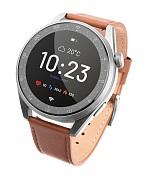
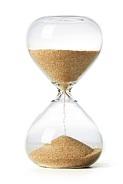



My Maths Fact File Measures
Units 5, 10, 13, 14
17) Time analogue digital sand timer stopwatch sundial calendar July Mon Tue Thur Sun 123 4 6 7 89 11 12 13 15 17 18 20 21 23 25 26 28 29 31
of
1 year = months 1 season = months 1 day = hours 1 hour = minutes 1 2 hour = minutes 1 minute = seconds half past 1 2 past o’clock 300 30 124
(see
, 15 and
1 week has days. April, June, September and November have days. February has or days. All
the other months have days.
Measuring
Use these symbols to help you: <, >.




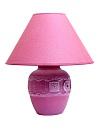






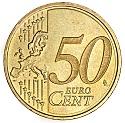
















My Maths Fact File ==++ + ==++ =+ +
1 metre tall 1 metre 1 metre litre 1 litre 1 litre kilogram 1 kilogram 1 kilogram Money c c c c c c € € € € € € 5 kg FLOUR 1kg SUGAR kg 1 2 125
2-D shapes
How many…
3-D shapes
How many…
My Maths Fact File
Shape and Space (see Unit 6)
Name curved
straight
corners? circle 10
semi-circle 11 0 square 04
sides?
sides?
0
4
Name curved surfaces? flat faces? curved edges? straight edges? corners? cube 060 12 8 cone 111 00 126
Location and Transformation (see Unit 9)
Turns
forwards backwards turn right turn
full turn clockwise 1 2 turn clockwise turn
anti-clockwise turn
anti-clockwise
What move?
How was each piece moved? Write the correct word for each. slide turn flip
Symmetry
Draw lines of symmetry if you can.
Number of lines
of symmetry =
Number of lines
of symmetry =
Number of lines
of symmetry =
My Maths Fact File
127
Data (see Units 4 and 16)
Tally chart
A group of children were asked their favourite flower. Complete the tally chart.
favourite f




How many children in total were asked?
Block graph
A group of children were asked their favourite colour. Colour: redblue green yellow
Tally:
block
How many children in total were asked?
My Maths Fact File
Our
Tally Total Daffodil Rose 8 Daisy Tulip 6
lowers
Complete the
graph. Title: Red Green Yellow 12 3 4 56 78 910
128
Our favourite






















































































































































































































































